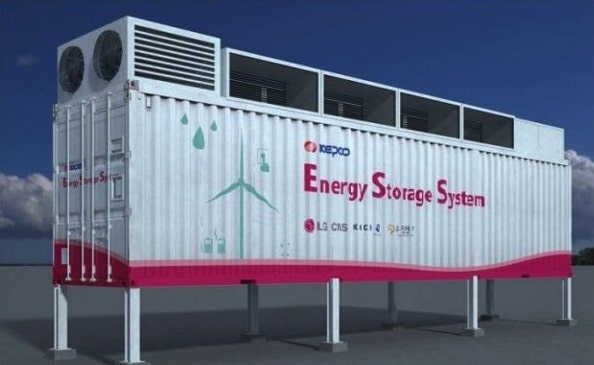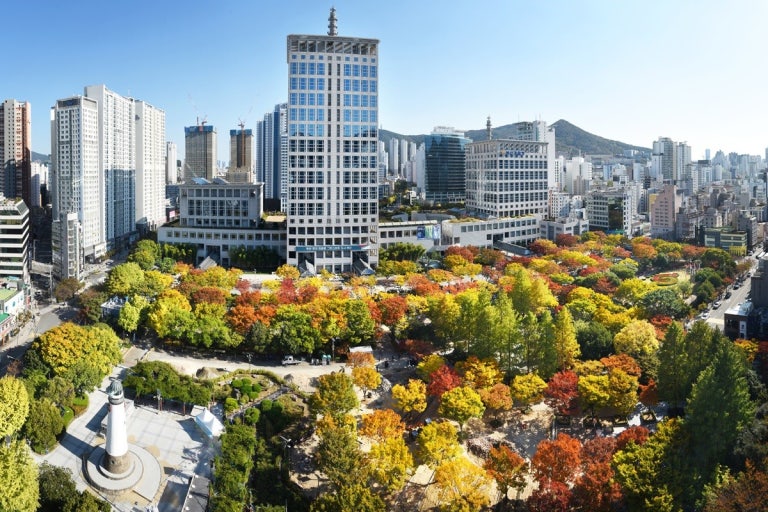Table of Contents
- Energy Transition and Green Future, Busan's New Vision
- Four Key Goals to Achieve by 2030
- Expansion of Supply Centered on Solar Power, Offshore Wind, and Fuel Cells
- Citizen-Centered Demand Management and Expansion of Energy Welfare
- Expand Distributed Generation Including ESS and Connect to Local Economy
- Planning Process: Actively Reflecting Citizen and Expert Opinions
- Conclusion: Beyond Energy Independence, A Driving Force for Industrial and Economic Transition
- Frequently Asked Questions (FAQ)
Energy Transition and Green Future, Busan's New Vision

Recently, Busan City confirmed the '7th Regional Energy Plan', presenting a long-term roadmap to increase the renewable energy power self-sufficiency rate to 13.5% by 2030. This plan is based on the necessity to respond to climate change and achieve sustainable growth.
In particular, it includes strategies to achieve regional energy independence and reduce greenhouse gases simultaneously. The 'Regional Energy Plan', which is established every five years as a statutory plan, has become an important implementation plan to realize national energy policies at the local level in accordance with Article 7 of the "Energy Law".
This 7th plan follows the previous 6th plan (2020) and is structured around four key elements: the expansion of renewable energy, the supply of distributed generation, energy demand management, and greenhouse gas reduction. It is hoped that these strategies will effectively improve Busan's energy environment.
Four Key Goals to Achieve by 2030

Busan City has set specific goals to be achieved by 2030.
First, it plans to increase the renewable energy self-sufficiency rate to 13.5%, which means a 390% increase compared to 2023. Second, the supply rate of distributed generation is planned to expand from 1,054GWh to 3,936GWh, a 274% increase. Third, the goal is set to reduce energy demand by 15.3% compared to the base level. Lastly, the plan aims to decrease greenhouse gas emissions from 24.92 million tons to 21.64 million tons, representing a 13.2% reduction.
Through these goals, Busan aims to achieve an energy transition and move towards 'Green City Busan', establishing a foundation for the energy industry to become a key growth driver for the local economy.
Expansion of Supply Centered on Solar Power, Offshore Wind, and Fuel Cells

In the field of energy supply, renewable energy focused on solar power, offshore wind, and fuel cells is expected to expand significantly.
In terms of generation, the goal is to reach 3,620GWh by 2030, up from 738GWh in 2023, indicating approximately 4.9 times growth.
In the solar power sector, plans are in place to expand infrastructure using the Myeongji and Noksan industrial complexes, ports, and public idle lands. Offshore wind power stations are planned to be built in areas such as Dadaepo, Saha-gu, Cheongsapo, and Gijang.
Moreover, fuel cell power plants will primarily be established in ports and industrial complexes. Additionally, resource recycling-type renewable energy sources such as biogas facilities and sewage treatment facilities are expected to be included, thereby diversifying energy supply sources.
Citizen-Centered Demand Management and Expansion of Energy Welfare

A total of 53 projects divided into industry, transportation, buildings, and public areas will be carried out in the field of demand management. Notably, there has been an expansion of power projects that citizens can participate in, and energy vouchers and support for urban gas installations for low-income groups have been included, strengthening energy welfare.
In the industrial sector, support will be provided for smart factories and facilities to reduce greenhouse gases. In the transportation sector, plans include the distribution of electric and hydrogen vehicles, tram construction, and support for commuter buses. In the building sector, consulting for zero-energy buildings and green remodeling of public housing will be carried out. In terms of energy welfare, it includes energy vouchers, coal coupons, and the expansion of urban gas supply facilities.
These projects are evaluated as multifaceted strategies that go beyond simple energy savings, responding to the climate crisis, addressing energy exclusion, and contributing to local job creation.
Expand Distributed Generation Including ESS and Connect to Local Economy

Distributed generation is a power generation system composed of renewable energy, fuel cells, and energy storage devices (ESS), which is very important in complementing the limitations of centralized power grids.
Busan City plans to expand the capacity of this distributed generation to 3,936GWh by 2030 to build an energy system that can efficiently respond to local power demands.
In particular, distributed generation will be placed in regions with rapidly increasing power demand, such as new industrial complexes, data centers, and logistics hubs, to enhance energy efficiency and ensure the stability of the power grid.
Planning Process: Actively Reflecting Citizen and Expert Opinions

The 7th plan was completed by reflecting the opinions of various citizens and experts. 1,048 people participated in the survey, and citizen feedback was collected through public hearings and a youth supporter program. Additionally, expert reviews from working groups related to energy efficiency and hydrogen industries were included.
Subsequently, on June 25, 2025, it was final confirmed by reflecting the deliberations and opinions of the Busan City Energy Policy Committee. This is evaluated as a good example of citizen-led energy transition governance, and it is expected to contribute to enhancing the effectiveness and implementation of policies.
Conclusion: Beyond Energy Independence, A Driving Force for Industrial and Economic Transition

The 7th Regional Energy Plan of Busan stands out as a comprehensive strategy aimed at transforming the city's structure and industrial ecosystem, going beyond merely saving energy.
In response to the increasing energy demand amid the 4th industrial revolution, policies will be actively pursued to promote a green transition for the recovery of the local economy.
Through the utilization of various energy resources such as solar power, offshore wind, fuel cells, and energy storage systems (ESS), and by expanding citizen participation, attention will be drawn to the realization of 'A Green Future for All, BIG Busan.'
#BusanEnergyPlan, #7thRegionalEnergyPlan, #RenewableEnergy, #SolarPower, #OffshoreWind, #FuelCells, #ESS, #PowerSelfSufficiencyRate, #EnergyTransition, #GreenCityBusan, #EnergyWelfare, #CarbonNeutrality, #GreenhouseGasReduction, #BusanClimatePolicy, #DistributedGeneration, #DemandManagementPolicy, #ZeroEnergyBuilding, #ElectricVehicleDistribution, #HydrogenVehicleDistribution, #BusanRenewableEnergy, #BusanSmartEnergy, #CleanEnergy, #BusanGreenNewDeal, #CarbonNeutralCity, #EnergyIndustryPromotion, #BusanIndustrialComplex, #EnergySelfSufficientCity, #BusanPowerPolicy, #EnergyPolicyCommittee
Frequently Asked Questions (FAQ)
Q. What are the main goals of Busan's 7th Regional Energy Plan?
The goals are to achieve a renewable energy self-sufficiency rate of 13.5% by 2030, expand distributed generation, reduce energy demand, and cut greenhouse gas emissions.
Busan aims to increase the renewable energy self-sufficiency rate to 13.5% and expand the supply rate of distributed generation by 274% by 2030. Additionally, it plans to reduce energy demand by 15.3% and greenhouse gas emissions by 13.2%, targeting sustainable energy transition and green city establishment. This plan contains strategies to cultivate Busan's energy industry as a core growth driver for the local economy.
Q. How will Busan expand its supply of renewable energy?
The plan aims to increase generation by more than 4.9 times, focusing on solar power, offshore wind, and fuel cells.
Busan will expand solar infrastructure in industrial complexes and public unused lands, and install offshore wind power stations in the areas of Dadaepo, Saha-gu, Cheongsapo, and Gijang. Fuel cells will be predominantly established in ports and industrial complexes. Additionally, resource recycling-type renewable resources will be utilized to expand various renewable energy supply sources. Through these efforts, generation will increase from 738GWh in 2023 to 3,620GWh by 2030.
Q. What are the major projects planned by Busan to expand demand management and energy welfare?
These include industrial smartization, the distribution of electric and hydrogen vehicles, green remodeling of buildings, and energy support for low-income groups.
Busan will expand support for smart factories and facilities to reduce greenhouse gases in the industrial sector, while in the transportation sector, it will implement distribution of electric and hydrogen vehicles, tram construction, and commuter bus support. In the building sector, consulting for zero-energy buildings and green remodeling of public housing will be promoted. Moreover, it will enhance energy welfare for low-income groups through energy vouchers, coal coupons, and the expansion of urban gas supply facilities.
Q. What benefits will the expansion of distributed generation bring to Busan?
It provides stable and efficient energy supply and grid stability to regions with increasing power demand.
Busan plans to expand distributed generation capacity to 3,936GWh by 2030, deploying it to regions with high power demand such as new industrial complexes, data centers, and logistics hubs. This aims to complement the limitations of centralized power grids, enhance energy efficiency, and secure grid stability. Distributed generation, made up of renewable energy, fuel cells, and ESS, is essential for building a localized energy system.
Q. How were citizen and expert opinions reflected in the planning process of the 7th Regional Energy Plan?
Opinions were variedly reflected through surveys, public hearings, youth supporters, and expert group reviews.
In the planning process, Busan collected broad-based citizen opinions through a survey participated by 1,048 people, along with public hearings and a youth supporter program. Furthermore, expert reviews were conducted by working group experts on energy efficiency and the hydrogen industry, with the final plan being confirmed in June 2025 by incorporating opinions from the Energy Policy Committee. This citizen-led governance is enhancing the effectiveness and implementability of policies.
